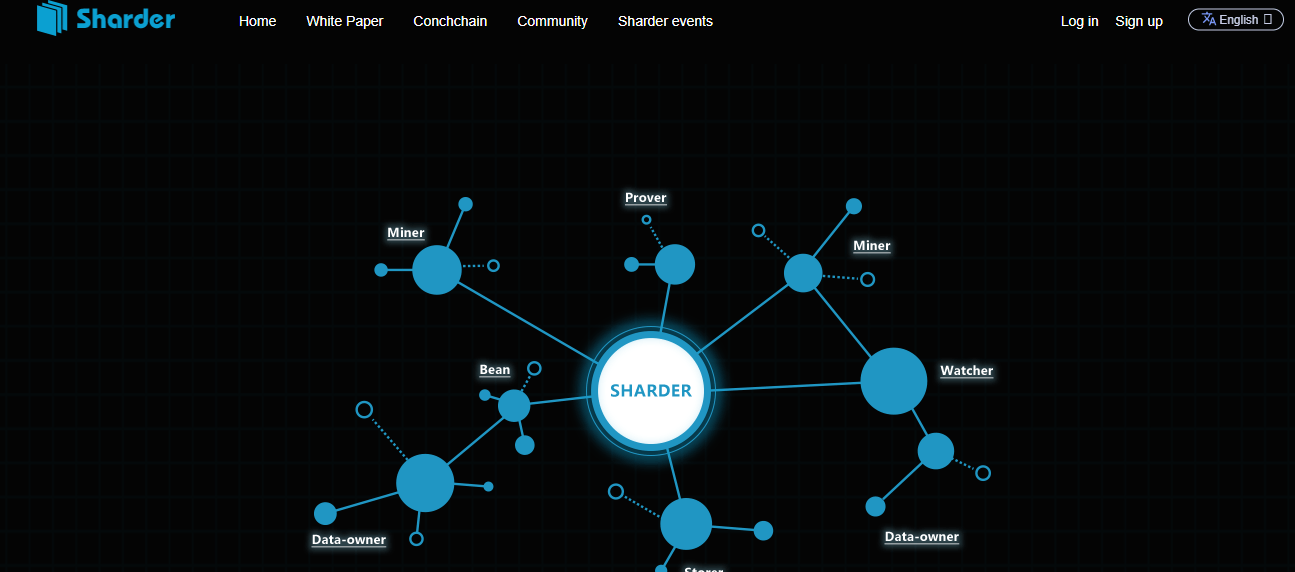We live in a world where everything is data-driven. With the continuous development of information technology and smart life, we have witnessed a tremendous explosion in the growth of data use across the planet.
Sharder is an all-new cross-chain distributed storage protocol that introduces the concept of ‘Watcher and Prover’. The protocol’s own SharderUTXO model is compatible with the UTXO model that is currently employed by the Bitcoin blockchain.
From a technological standpoint, the Sharder Chain provides users with a high degree of:
- Robustness
- Security
- Privacy
Also worth mentioning is Sharder’s use of a sharing economy model wherein the cross-chain distributed storage network is able to provide subscribers with an efficient, permanent storage service. Not only that, the protocol also enables subscribers with redundant storage space to share their extra space in exchange for attractive rewards.
Quite similar to the model used by Airbnb, Sharder Protocol’s multi-chain scheme employs a distributed, secure, convenient and permanent sharing network.
Lastly, Sharder deploys micro node miner (Sharder Hub) and storage mining all-in-one (Sharder Box) units that allow data miners to receive rewards by either contributing computing power or providing storage space to the network.
Overview of the platform
- Sharder Protocol is open-source and free for everyone to use. It can be deployed within any public chain or storage network.
- Independent users and third-party organizations have the ability to use Sharder and develop their DApps on it.
- According to the company roadmap, Sharder will release two additional service modules called Sharder Matrix and Sharder Brain in the near future.
- The network can be used to store a wide array of data including conventional files such as photos and documents as well as niche data such as biological information.
- The Sharder Foundation is in charge of the Sharder protocol’s R&D.
Key Features
For starters, Sharder makes use of a loose network architecture that allows for single node failure as well as some occasional downtime. However, in such cases, the network remains robust, thus providing users with a high degree of reliability and overall usability.

Overview of the Sharder ecosystem
With the Sharder Protocol, all network data is encrypted and private. Data owners have full ownership of their information, and no third-party personnel lacking relevant authorization can gain access. Similarly, all contributions made within the system are quantified, observable, and based on measuring methods such as PoST (Proof of Storage and Time) and PoR (Proof of Replica).

Visual representation of the Sharder Protocol
Lastly, it is worth mentioning that data objects are allowed to remain in various states of operation at different nodes, but at the same time they possess the ability to converge and create a stable consistency within the network. Said objects are closely monitored and could be spontaneously recovered to some extent.
How it all works
The Sharder Protocol constructs a distributed storage network which provides customers with a cost-effective storage space solution. In addition, the protocol also serves as a reliable data storage medium as well as a transparent on-chain information unit.

A simplified representation of how the system works
All of the storage space, stored data and digital assets contained within this network come together to form a free market which is accessible to everyone. In the same vein, the Sharder Network is accessible not only to conventional storage resources, but also to global public chains such as Qtum and Ethereum; storage networks such as IPFS, Aliyun, and Baidu Cloud; and personal storage resources such as spare disks and cloud disks.
The Sharder protocol adopts a data sharding, multi-replica model wherein the security and availability of data is maximized. It helps connect users to various public chains and networks to form a highly complex ecosystem. Moreover, the protocol automatically initializes authorization of Sharder-PAIR and Sharder-UTXO to meet the requirements of audits and supervision of enterprises or regulators.
About the team
Ben Xiong is the CEO and CTO of this project. He possesses over 15 years of experience in the digital domain and has specialized in areas such as data programming and engineering. Ben holds a B.Eng. degree from Shanghai Jiaotong University. His other work credentials include:
- Chief structural architect of Seachange
- Chief Architect of Yiji Pay
- Co-founder and CTO of Taogushen.com
- Founder of Conch Chain
Jeffrey Zhu is the COO of this project. According to his professional bio, Jeffrey possesses eight years of experience in niche areas such as programming, finance, business operations and entrepreneurship. He holds a bachelor’s degree in computer science from Peking University and co-founded both Beiming and Chain Renaissance Capital.
Lastly, Rick Wang is the CMO of the company. In addition to holding six years of experience in marketing, channel development, and entrepreneurship, Rick served as the marketing director of Huangcheng Technology Co., Ltd. and as general manager of Zebra Environment Technology Co., Ltd.
Token Performance Details
Introduced into the market earlier this month, Sharder (SS) coins were initially valued at US$0.08 per token.

SS token lifetime performance chart (courtesy of CoinMarketCap)
While the currency has performed well, due to the newness of its associated product, it is still difficult to assess the true potential of this token.
As of May 9, the price of a single SS token stands at $0.099.
Final Thoughts
Sharder Protocol delivers its customers with a cross-chain distributed storage protocol that can potentially be deployed on various public chains, storage networks, personal nodes, etc.
Owing to its multifaceted nature, it would not be surprising to see this service continue to do well this year.
If you are interested in investing in Sharder, SS trading pairs are currently available on DDEX, IDEX, and OTCBTC.

